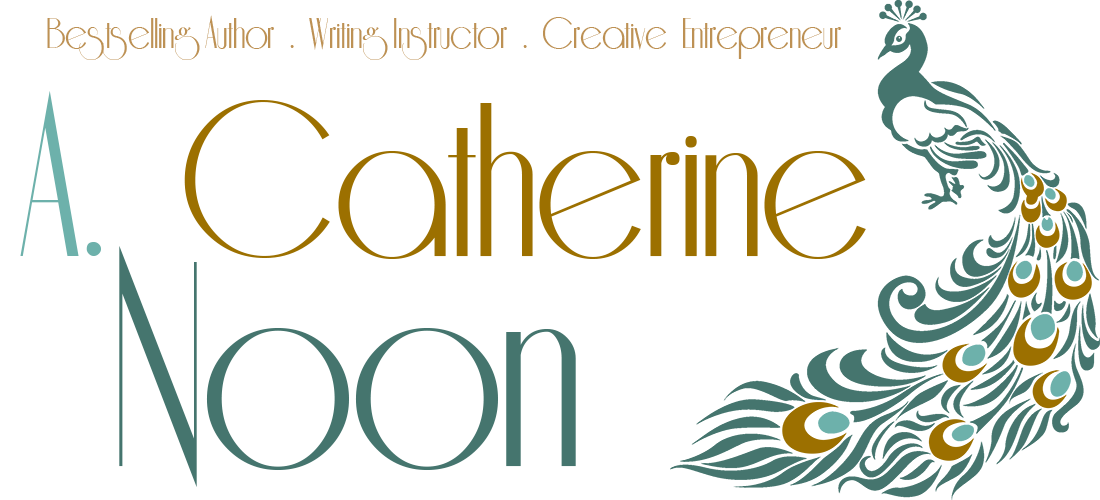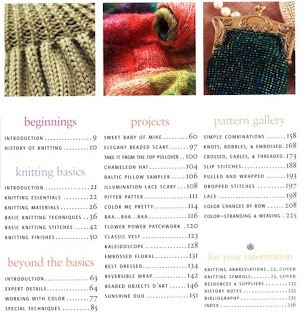Thursday 13: A Writer In Her Library
Chapter Three
Today’s TT focuses on Knitting Reference books. These books focus on particular techniques, rather than a designer’s vision of patterns, and include stitch dictionaries. I love knitting reference books. They usually have things in them I don’t already know, or look at a particular topic in a new way.
In fact, when I signed up for the Master Knitter course through TKGA, a bibliography is part of the course. I figured, in my arrogance, that I am The Noony! Of COURSE I have all the books on the bibliography, and what books I don’t have aren’t worth bothering with, because I am The Noony.
Boy, was I stunned. I had, like, two.
Out of FOUR PAGES.
Sheesh. Put me in my place, whydon’tyou?
I have since collected several of the books on the recommended bibliography and wow, those folks sure know what they’re doing! These books are awesome!!!
Anyhoo, back to MY list, because after all, I am The Noony.
1. Crompton, Claire; The Knitter’s Bible; David & Charles; Cincinnati, OH; 2004
I like this book a lot. It covers the basics, but after each technique, it includes projects that use what you just learned. There are several projects that I want to try myself, including gorgeous little sachet bags and blankets and purses and things. Well-rounded, fun book.
2. Epstein, Nicky; Knitting On The Edge; Sixth & Spring Books; New York; 2004
Knitting Over The Edge, 2005
Knitting Beyond The Edge, 2006
Nicky Epstein is an amazing designer. She doesn’t only ‘do’ knitting, she’s published books on crochet design as well. She travels internationally, teaching, and even came to our guild here in Chicago two years ago.
She decided to write Knitting On The Edge when she realized there weren’t any guides to edging techniques available at the time. Some books had some edgings, but nothing really dedicated to the edges of garments. She started researching and collected a number of edging options, as well as designing a bunch on her own, and voila: a phenomenon was born. Immensely popular, On the Edge was followed a year later with Over the Edge, and then Beyond the Edge. These are stitch dictionaries as opposed to longer design books; they are filled with ideas that you can incorporate into your own projects. There are a few projects given that utilize the patterns, but for the most part, it’s simply a graphic of a particular edging pattern and instructions for how to work it.
Since she has a very involved website, I’m going to include that here rather than an image of her table of contents. You can check out her work here: http://nickyepstein.com/. She doesn’t only have textile arts; she created a line of handmade buttons and clasps that are incredible and well worth a browse.
The books are available for purchase:
Knitting On the Edge
Knitting Beyond the Edge
3. Golden Hands; Aran & Fair Isle Knitting; Marshall Cavendish; London; 1977
A classic book, but worth a look if you like the style of knitting. It includes detailed instruction on the art of Aran (cable) knit sweaters and Fair Isle (colorwork). It’s got a number of interesting patterns that will expand your skills and experience with these two techniques.
4. Kooler, Donna; Encyclopedia of Knitting; Leisure Arts Publication; Little Rock, AK; 2004
This is a good all-around technique dictionary. There are some lovely pictures, and I totally want to make that handbag on the table of contents.
5. Leinhauser, Jean; Learn to Knit in Just One Day; American School of Needlework; San Marcos, CA; 1994
This one holds a special place in my heart. I dearly wanted to learn to knit for most of my life. I couldn’t master crochet, and I tried the one needle knitter from K-Tel with some success. But I really, REALLY wanted to learn to knit.
Sadly, I can’t translate two-dimensional instructions into three-dimensional reality.
I really tried, too.
I picked up this book several times over the years, and could NOT master it. I finally took a class in 2000 from Sharon Shoji, a Chicago instructor and designer. I haven’t looked back.
And do you know what? After I took the class, this book suddenly made sense!
If you don’t have the 2-D/3-D disconnect, this is a remarkably easy book to learn from. It’s thorough and teaches you to make sweaters and afghans in a very short time. I actually like it because it doesn’t have a lot of the clutter of some of the modern glitzy books, which can be good when you’re trying to learn.
6. Leisure Arts; 99 Knit Stitches; Leisure Arts Publication; Little Rock, AK; 1997
This book a surprise. It’s put together in a booklet format that seems light-weight, but when you delve into it, it’s got a very well-rounded group of stitches to try. It’s a good little stitch dictionary and has the benefit of not weighing a lot in one’s knitting bag.
7. Rutt, Richard; History of Hand Knitting; B T Batsford; London; 1989
This is the classic book on knitting history. Written from the point of view of scholar and not knitter, it’s a little dry, but the information is comprehensive and well-researched. If you’re curious about knitting’s origins in history (like the fact it probably comes from the Middle East, for example, and the oldest extant knitted textile is a sock from Turkey), this is the book for you.
8. Starmore, Alice; Book of Fair Isle Knitting; Taunton Press; Newton, CT; 1988
I coveted this book for ages. Starmore is my hero. I looked up the book and couldn’t find it for under $150, since it had gone out of print. I saved and saved and one year, got two gift certificates for Amazon. I found it for $99 and pounced on it.
The next year, Schoolhouse Press re-released the book.
🙁
Not that I have anything against Schoolhouse Press. Lovely group. But sheesh!
If you are serious about Fair Isle (colorwork), this is a phenomenal book. Starmore teaches you about design, not just the knitting process. She also discusses the history of the art, which is worth a read.
9. Sterling; Knitting School: A Complete Course; Sterling Publishing Company; New York; 1990
I bought this through the Crafter’s Choice book club. I do not recommend it. Poorly done, with inadequate explanations. I kept it because I already know how to knit and figured that some of the instruction might be useful, but this is little better than a stitch dictionary.
10. Vogue; Vogue Knitting and Vogue Knitting Quick Reference; Sixth & Spring Books; New York; 2002
These are excellent reference materials. The Quick Reference can be carried in a knitting bag. Vogue Knitting covers all the basics, and has an excellent overview of different cast-on and cast-off methods, construction, and a modular sweater design method that breaks down the design process into clear steps.
11. Vogue; Stitchionary: Volume One – Knit and Purl; Sixth & Spring Books; New York; 2005
Stitchionary: Volume Two – Cables, 2006
These are good stitch dictionaries. There are more volumes than the two I have, but Volume III is colorwork and IV is crochet, neither of which I really need. These two basic ones are good. They’re not great; they don’t have details about the stitches or how they work, and I find the Harmony Guides better for basic instruction. But I’m loyal to Vogue and like these two books.
12. Vogue; The Ultimate Sock Book; Sixth & Spring Books; New York; 2007
If you like socks, BUY THIS BOOK.
‘nuff said.
I love it. It covers toe up and cuff down, all sorts of design information, and then a whole library of designs for you to play with. Loff!
13. Walker, Barbara G.; A Treasury of Knitting Patterns; Schoolhouse Press; Pittsville, WI; 1998
A Second Treasury of Knitting Patterns; 1998
Charted Knitting Designs: A Third Treasury of Knitting Patterns; 1998
A Fourth Treasury of Knitting Patterns; 2000
Awesome!! These are an excellent basis for any knitter’s library. In fact, Walker has nearly eclipsed Alice Starmore as my Number One Knitting Hero. I use Walker’s books more often than Starmore’s, as it happens. She’s smart, funny, and opinionated. I love her. Her stitch books put the Stitchionaries to shame: she gives details for EACH of the stitch patterns she includes in her books, which include her thoughts on the history of the stitch, how it works in garments and projects, whether it looks good on the front and back or if it’s one-sided, etc. I love these books, and am grateful to Schoolhouse Press for re-releasing them.
If you are a knitter who is familiar with Walker’s books, you should check out the Walker Treasury Project. It’s a blog that records modern color pictures of the patterns in the four books. Four more information, visit the blog.
Happy TT!







Lovely Post Catherine..!
As much as you\’re in to this, you could probably write one of these yourself.
That thought did occur to me, as a matter of fact. I\’ve written a couple articles on the history of knitting, and am planning some more in the future. We shall see.
I\’m adding most of these to my Amazon wish list. Crochet is easy for me; knitting anything more complicated than scarves is hard! Thanks for the list, Noony.
I\’m not a knitter, but I an crochet. I taught my daughter and boy did she take off with it.
Janice~
Wow, Noony, you\’re singing my song this week! I have a few of those. Need more.
Always need more, right?
I used to do more knitting before I started writing. In fact I\’m not even sure where my knitting books are at present. I\’m going to have to check out the book on knitting socks. With winter coming socks would be handy!
I agree that you should write one! 🙂
Awesome!!!
Knitting is one of those skills I would love to learn.